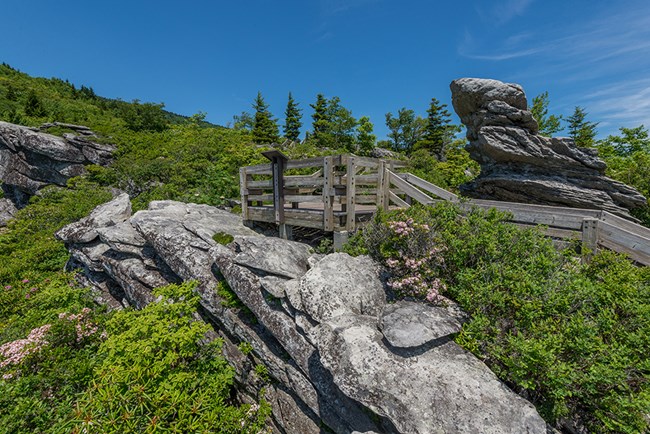
NPS photo
To protect the fragile habitat of Grandfather Mountain, Parkway planners designed the Linn Cove Viaduct. This award-winning complex concrete bridge is a symbol of pride to landscape architects and engineers for its marriage of beauty with utility and habitat protection. Visitors here will gain an appreciation for the care that was taken in construction of the entire Parkway. Learn more about the history and construction of the Linn Cove Viaduct.
The Blue Ridge Parkway is the work of landscape architects who meticulously planned a road that would blend with the environment in a gentle flowing way. Bridges are an important part of the Blue Ridge Parkway’s design concept. There are 176 bridges on the parkway: 10% of all the road bridges in the National Park Service. Bridges are the largest structures on the parkway and have to be functional in addition to visually appropriate. 
Harold Blackwood photo At a Glance:
Points of Interest:Linn Cove Viaduct: Drive across the last section of the Parkway to be completed, a true engineering feat. Although visitors are not allowed to walk along the viaduct, several overlooks and trails provide excellent views. Sleeping and Eating:The Linn Cove Viaduct has no sleeping or eating options. See nearby towns for accommodations. On the Parkway, Linville Falls is nearby for camping. Things to Do:Hike a Trail: The Tanawha Trail, a Cherokee word meaning fabulous hawk or eagle, is a 13.5-mile hike that connects Julian Price Park to Beacon Heights hiking area. Hike a portion or the whole trail to get excellent views of the Linn Cove Viaduct, Grandfather Mountain, and surrounding area. See the Tanawha trail page for more information. | |
Last updated: May 20, 2025
